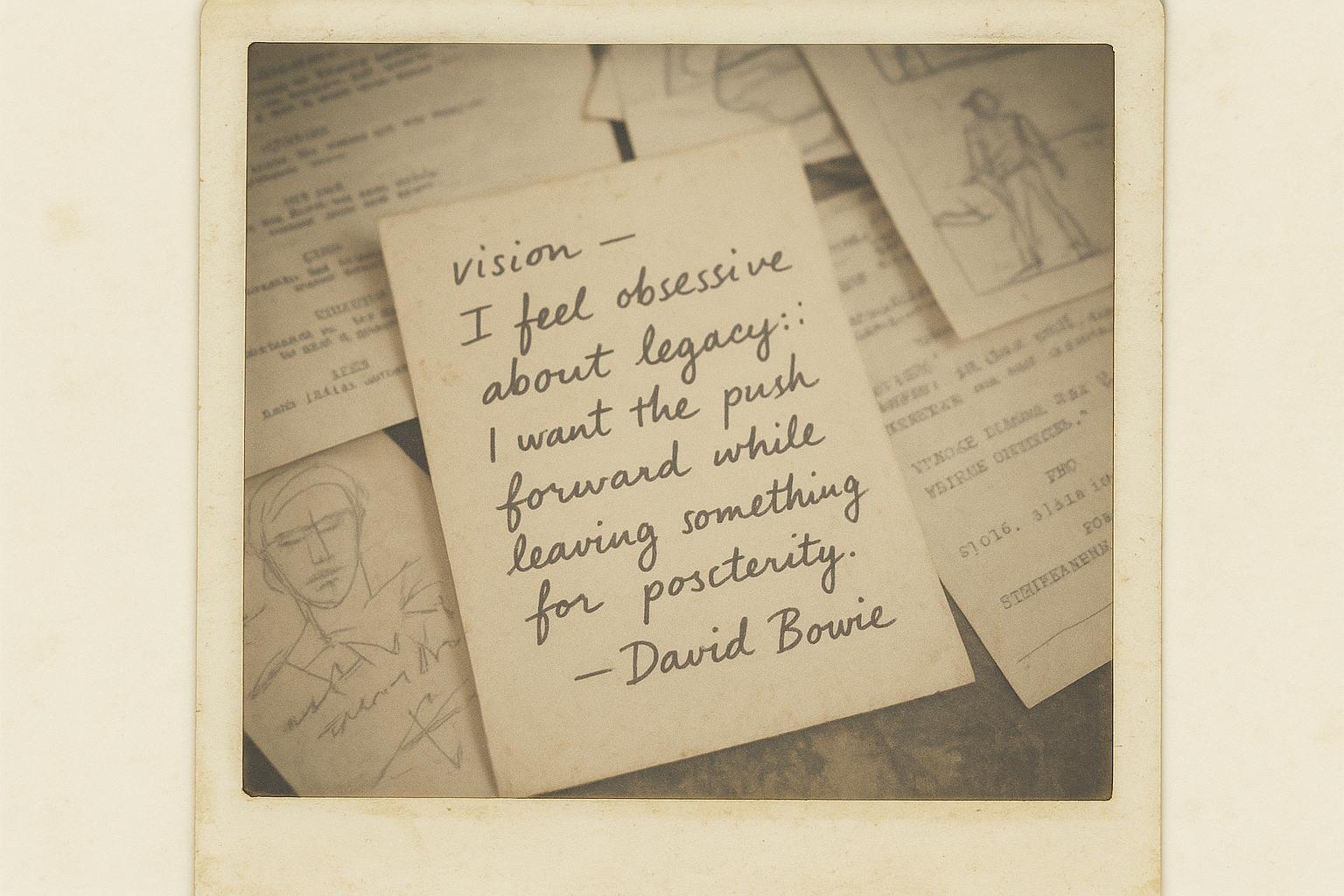In the 1990s, David Bowie began assembling an extensive archive of his career, a move closely linked to a pivotal moment in his artistic journey. Following the 1990 Sound+Vision tour—where he famously declared his intention to perform his hits live for the last time, only to reverse that decision within two years—and the turbulent era of his hard rock band, Tin Machine, Bowie confronted his past with a new sense of purpose. Rather than disowning his legacy, he embraced it through meticulous preservation. According to Madeleine Haddon, lead curator at the Victoria and Albert Museum (V&A) in London, Bowie’s archive reveals a “tremendous” capacity for self-reflection, filled with carefully curated memorabilia and personal annotations that paint an intimate portrait of the artist’s evolution.
Set to open on September 13, 2025, the David Bowie Centre at the V&A’s East Storehouse in Hackney Wick offers the public unprecedented access to approximately 90,000 items spanning five decades. The archive’s breadth is remarkable: it includes 70,000 photographs, 400 costumes, 150 musical instruments, handwritten lyrics, fan letters, and personal notebooks. Among the treasures is the Stylophone Bowie famously played on "Space Oddity," which he reportedly reacquired via eBay himself. The collection also holds quirky items such as fan-made badges, pebble sculptures, and a fan T-shirt campaigning for a tour Bowie never intended to undertake after the release of his 2013 album, The Next Day. Haddon describes the facility’s booking system for viewing specific objects as "absolutely revolutionary," providing more straightforward public access than comparable archives in the United States.
The Centre’s exhibition philosophy is notably different from the blockbuster "David Bowie Is" show of 2013, the V&A’s most visited exhibition to date. Rather than attempting to tell a comprehensive story, the Centre focuses on thematic cabinets—nine in total, with three rotating every six months and guest-curated displays by figures such as Nile Rodgers and The Last Dinner Party—offering visitors curated insights into Bowie’s multifaceted career. Among the displayed artefacts are striking pieces like the powder blue Freddie Burretti suit from the "Life on Mars?" video and the Angel of Death costume from the 1980 Floor Show, marking Ziggy Stardust’s final bow. Additionally, handwritten notebooks reveal Bowie’s artistic ambitions beyond music, including an unfinished theatrical project titled The Spectator. This project, inspired by 18th-century London, explored themes of social contrasts and public spectacle, reflecting Bowie’s fascination with historical figures like Jack Sheppard and the Mohocks. The Spectator’s concept and research materials will be part of the Centre’s display, highlighting Bowie’s polymath creative impulses.
The archive also revisits lesser-celebrated facets of Bowie’s career, such as the extravagant 1987 Glass Spider tour. Though criticized at the time for its excess, the Centre’s interpretation emphasises its significance in Bowie’s artistic narrative, even linking its Berlin leg to broader cultural shifts leading to the Cold War’s end. Meanwhile, Bowie's notebooks reveal ambitions for a lavish theatrical premiere of his enigmatic, unreleased album precursor "Leon" in Mumbai—an audacious plan that underscores Bowie’s continuous desire for innovation despite commercial pressures.
Perhaps most striking is the contrast between Bowie’s prolific archival diligence and his public stance. Throughout his later career, the artist resisted being "intimidated by his own back catalogue," avoiding nostalgic rehashes in favour of forward-looking projects. His 2013 album The Next Day, with its stark white cover obscuring his past imagery, embodied this ethos, while his final album embraced a jazz-influenced direction that defied expectations. Yet, quietly and meticulously, Bowie preserved and annotated his legacy, collecting fan memorabilia and personal artefacts with a curator’s precision. This dichotomy between public detachment and private preservation offers a nuanced understanding of Bowie’s relationship with his own mythology.
The David Bowie Centre at the V&A stands as a testament not only to Bowie’s remarkable career but also to his deep engagement with memory and legacy. It challenges perceptions of him as a distant, enigmatic figure by revealing a man profoundly connected to his audience and his art, meticulously cultivating a legacy that continues to resonate with fans and scholars alike. Bowie’s enduring promise, echoed in a now-iconic quote emblazoned on Centre merchandise—“I don’t know where I’m going from here but I promise it won’t be boring”—feels more real than ever as visitors gain intimate access to the vast, detailed archive he so carefully curated.
📌 Reference Map:
- Paragraph 1 – [1], [4]
- Paragraph 2 – [1], [2], [5], [6]
- Paragraph 3 – [1], [4], [3], [6]
- Paragraph 4 – [1], [6]
- Paragraph 5 – [1], [5]
- Paragraph 6 – [1], [4]
Source: Noah Wire Services
